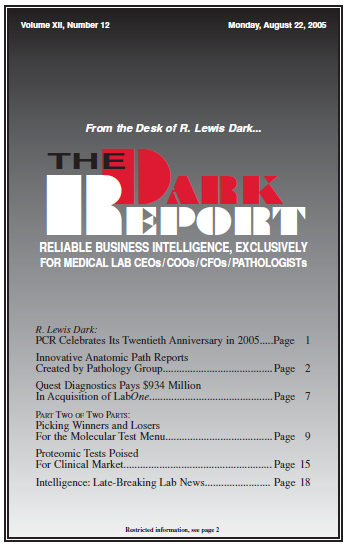CEO SUMMARY: In the 15 years it has operated a molecular diagnostics testing program, Beaumont Reference Laboratory (BRL) has learned important lessons on how to evaluate which specific molecular assays are ready for clinical introduction. It has also learned effective ways to anticipate the clinical and financial success of such assays. Part II of this …
Picking Winners and Losers For the Molecular Test Menu Read More »
To access this post, you must purchase The Dark Report.


